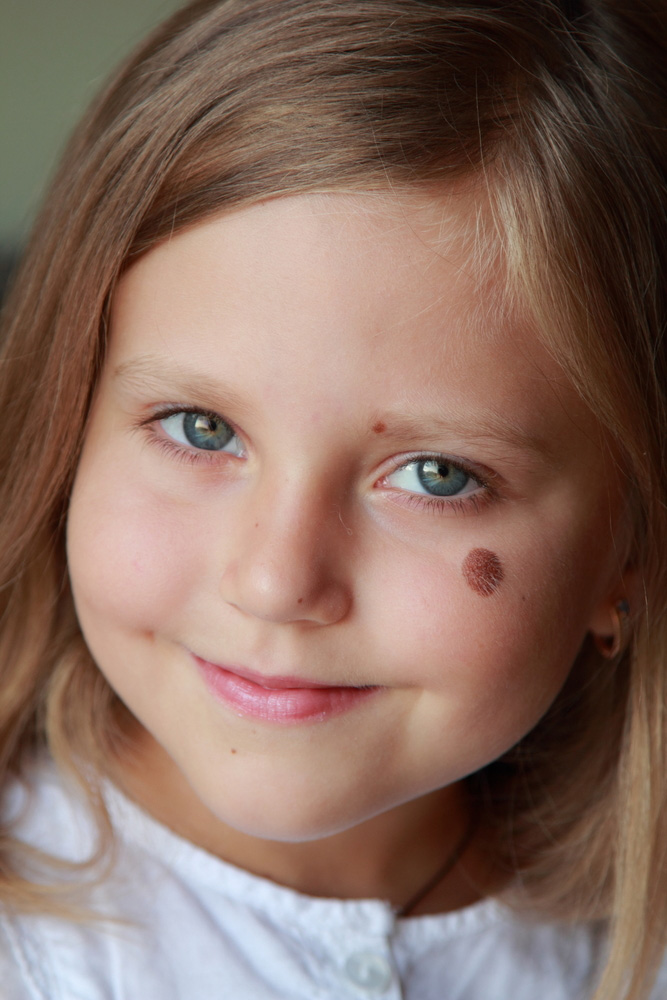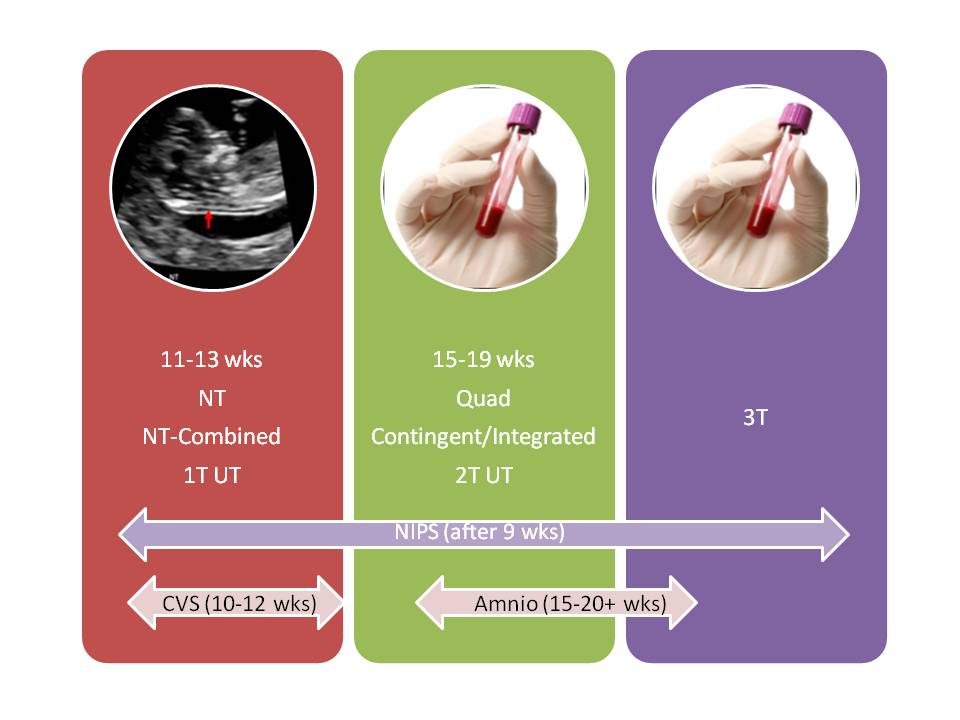Raised red birthmark
Infantile Hemangiomas: About Strawberry Baby Birthmarks
Hemangiomas are clusters of extra blood vessels on a baby's skin. They may be there when a baby is born, or form within a few weeks or months of birth. Some may look like rubbery, bumpy red "strawberry" patches while others resemble deep bruises. Seeing a hemangioma develop can be worrisome for new parents.
The American Academy of Pediatrics (AAP) guidelines say it's important to identify and begin monitoring infantile hemangiomas right after they appear―when they tend to change most quickly.
While hemangiomas can vary a lot in size, appearance, and placement, they are universally benign (non-cancerous). Most will go away on their own without causing any problems. Some hemangiomas―particularly those on the face or those that are very large―need treatment early to prevent them from interfering with body functions or causing permanent scars. Thankfully, there are excellent treatments available today to can prevent these problems if treated early on.
About Infantile Hemangiomas:
Infantile hemangiomas appear after a baby is born, typically within a month. Roughly 4% to 5% of all infants get them, although they are more common in Caucasians, girls, twins, and preterm or low-birth-weight babies. Infantile hemangiomas typically go through a period of rapid growth, followed by more gradual fading and flattening.
There are different types of infantile hemangiomas:
Superficial hemangiomas have been called "strawberry marks," because they can resemble the surface of berries. They may begin as small white, pink, or red areas on the skin that quickly change into brighter red, raised lesions. Superficial hemangiomas may be focused in one spot or spread out over a larger area.
Deep hemangiomas have a smooth surface and form under the skin. They may have a bluish tint and resemble bruises. Some cause the skin to look swollen.

Mixed hemangiomas are a combination of superficial and deep growths.
Are there other birthmarks like it?
Some of the other marks that can show up on a baby's skin include port wine stains and "stork bites." These also are caused when more blood than usual floods the capillaries under the skin. Port wine stains turn a reddish-purple and are often permanent; like hemangiomas, stork bites usually disappear, but can remain if they're on the back of the neck.
What to do if you think your baby has an infantile hemangioma:
Infantile hemangiomas usually become noticeable by 4 weeks of age. They may start out looking like a tiny bump or scratch. But many then grow especially fast between 5 and 7 weeks old. If you think your baby might have a hemangioma, it's best to contact your baby's pediatrician right away. He or she probably will want to see your baby within a short timeframe. According to the AAP, the best "window of opportunity" to be evaluated and start treatment if needed is about 1 month of age.
Your pediatrician will want to know:
Size: Is the hemangioma small (3/4" or less across) or larger?
Location: Is it located on the face or in the diaper area, or in a different area?
Number: Is there one or more than one? If more than one, how many?
If your doctor can't see you in the office right away, they may ask you to send photos or recommend a telemedicine visit to have a look without delay.
What to expect next:
It's important to continue monitoring the hemangioma until it stops growing.
Superficial hemangiomas typically reach their full size by 5 months of age, although
deep hemangiomas sometimes keep growing a while longer. In some cases, your pediatrician may give a referral to an infantile hemangioma specialist with expertise in
pediatric dermatology, hematology-oncology, otolaryngology, or
plastic surgery.
By the time a baby is 6-18 months old, most hemangiomas begin to slowly improve. In a process called "involution," the hemangioma will become less red and more grey or whitish and gradually flatten and shrink from the center outward.
Each case is different. Most hemangiomas have finished or almost finished flattening and shrinking by 4 to 5 years of age. |
When does a hemangioma need to be treated?
Whether a hemangioma needs treatment depends on the age of the baby, where the hemangioma is located and how fast it is growing, whether it becomes sore or scabby, and the risk of it causing medical complications with a child's health and well-being.
There are 3 main reasons for treatment:
Medical problems. In rare cases and depending where they are located and how fast they are growing, hemangioma may begin to interfere with vital functions.
 Hemangiomas near the child's eyes, nose or mouth, for example, can affect the child's ability to see, eat, breath or hear well. In rare cases, hemangiomas grow inside the body, which may need to be monitored with imaging tests.
Hemangiomas near the child's eyes, nose or mouth, for example, can affect the child's ability to see, eat, breath or hear well. In rare cases, hemangiomas grow inside the body, which may need to be monitored with imaging tests.Skin breakdown. Sometimes, skin on the hemangioma's surface breaks down and becomes an open sore (called an ulcer) that could lead to bleeding, infection, or scarring.
Permanent skin changes. Changes in the skin's texture or color can remain even after the hemangioma has gone away. This can be a concern, especially for hemangiomas on the child's face. Large hemangiomas on facial features such as the nose or lip can also distort growth.
What kinds of treatments are available for hemangiomas?
If a baby's hemangioma risks causing problems, medications can be applied directly to the skin or taken by mouth. The goal is to keep them from getting any bigger during their period of rapid growth, or to make them shrink more quickly. Laser procedures or surgery may be an option in some cases, although it generally is avoided during early infancy to avoid increased anesthesia risks.
Laser procedures or surgery may be an option in some cases, although it generally is avoided during early infancy to avoid increased anesthesia risks.
Systemic treatments
Propranolol, a beta blocker medication used for many years to treat high blood pressure, is now commonly given by mouth as an effective treatment for problem hemangiomas. To avoid a growth rebound, the pediatrician may recommend therapy continue until your child's first birthday. The drug must be used with close observation by your healthcare provider to watch for possible side effects and complications.
Oral steroids have been largely replaced by safer and more effective options, but are still used in select cases, determined by the healthcare provider.
Localized treatments
Topical medications applied directly on the skin may be used for small, superficial hemangiomas. Prescription creams or ointments containing beta-blockers are the most effective topical treatment option to help stop growth and sometimes shrink and fade hemangiomas.
 In some cases, steroid creams may be prescribed for smaller, thinner hemangiomas.
In some cases, steroid creams may be prescribed for smaller, thinner hemangiomas.Steroid injections can be given directly into the hemangioma to help slow its growth. This works best for smaller, localized hemangiomas.
Other treatments
Surgery is usually only considered for smaller hemangiomas in areas where they may cause problems, or for small hemangiomas with broken skin. Because surgery will always leave a scar itself--and because most hemangiomas get better with time--early surgery is only recommended for a small minority of cases. Surgery can also repair extra skin or scars left by a hemangioma, but usually is delayed until a child is between 3 and 5 years old.
Laser treatment may be helpful in some cases to stop bleeding or to help heal hemangiomas with open sores (ulcers). They can also help to remove some of the redness or texture changes that may be left behind after the hemangioma improves.

Remember:
Contact your pediatrician if you notice anything developing on your baby's skin. Your baby's first few well-child visits are also a great time to bring it up. Few hemangiomas cause any trouble, and most go away on their own. But prompt evaluation, monitoring and treatment, when needed, can help ensure problem hemangiomas have as little impact as possible on your child.
Additional Information:
Baby Birthmarks & Rashes
Management of Infantile Hemangiomas (AAP Clinical Practice Guideline)
HemangiomaEducation.org
The information contained on this Web site should not be used as a substitute for the medical care and advice of your pediatrician. There may be variations in treatment that your pediatrician may recommend based on individual facts and circumstances.
Port Wine Stains and More Types
Written by WebMD Editorial Contributors
In this Article
- What Causes Birthmarks?
- Do Birthmarks Need to Be Treated?
- Types of Birthmarks
- Hemangiomas and Your Skin
- What Are the Signs of Red Birthmarks?
- How Are Red Birthmarks Diagnosed?
- What Is the Treatment for Hemangiomas and Red Birthmarks?
- Can Hemangiomas and Red Birthmarks Be Prevented?
Birthmarks are colored skin spots that either are present at birth or develop shortly after birth. Birthmarks can be many different colors, including brown, tan, black, pale blue, pink, white, red, or purple. Some birthmarks are only colorations of the surface of the skin; others are raised above the surface of the skin or extend into the tissues under the skin.
Birthmarks can be many different colors, including brown, tan, black, pale blue, pink, white, red, or purple. Some birthmarks are only colorations of the surface of the skin; others are raised above the surface of the skin or extend into the tissues under the skin.
What Causes Birthmarks?
The cause of most birthmarks is unknown. Most of them are not inherited. Many folk tales and myths exist about the causes of birthmarks, but none of these stories have been proven to explain the true causes of birthmarks.
Do Birthmarks Need to Be Treated?
Most birthmarks need no treatment. They usually remain stable as a child grows older. However, some areas that can resemble blood vessel tumors -- called hemangiomas -- may need treatment because of their location. For example, a raised hemangioma near a child's eye may interfere with their ability to see. In rare cases, birthmarks are associated with other conditions, such as growths in the liver, lungs, stomach, or intestines.
Types of Birthmarks
There are two main categories of birthmarks -- vascular (having to do with blood vessels) birthmarks and pigmented birthmarks. Vascular birthmarks are often pink-, purple-, or red-colored skin markings that develop before or shortly after birth. Pigmented birthmarks are skin markings that are present at birth. The marks may range from brown or black to bluish or blue-gray in color.
Learn more about pigmented birthmarks.
Hemangiomas and Your Skin
The hemangioma is a common type of vascular tumor that may occur early in life and resemble a birthmark. It is usually painless and harmless and its cause is not known. Color from the birthmark comes from the extensive development of blood vessels at the site.
Types of hemangiomas and birthmarks include:
- Strawberry hemangiomas (also called strawberry mark, nevus vascularis, capillary hemangioma, hemangioma simplex) may appear anywhere on the body, but are most common on the face, scalp, back, or chest.
 They consist of small, closely packed blood vessels. They may be absent at birth, and develop during the first several weeks afterward. They usually grow rapidly, remain a fixed size, and then subside. In most cases, strawberry hemangiomas disappear by the time a child is 10 years old. Some slight discoloration or puckering of the skin may remain at the site of the hemangioma.
They consist of small, closely packed blood vessels. They may be absent at birth, and develop during the first several weeks afterward. They usually grow rapidly, remain a fixed size, and then subside. In most cases, strawberry hemangiomas disappear by the time a child is 10 years old. Some slight discoloration or puckering of the skin may remain at the site of the hemangioma. - Cavernous hemangiomas (also called angioma cavernosum or cavernoma) are similar to strawberry hemangiomas but are more deeply situated. They may appear as a red-blue spongy mass of tissue filled with blood. Some of these lesions may disappear on their own -- usually as a child approaches school age.
- Port-wine stains are flat purple-to-red birthmarks made of dilated blood capillaries. These birthmarks occur most often on the face and may vary in size. Port-wine stains often are permanent (unless treated).
- Salmon patches (also called stork bites) are very common birthmarks and appear on newborn babies.
 These marks are small blood vessels (capillaries) that are visible through the skin. They are most common on the forehead, eyelids, upper lip, between the eyebrows, and the back of the neck. Often, these marks fade as the infant grows.
These marks are small blood vessels (capillaries) that are visible through the skin. They are most common on the forehead, eyelids, upper lip, between the eyebrows, and the back of the neck. Often, these marks fade as the infant grows.
What Are the Signs of Red Birthmarks?
Signs of red birthmarks include:
- Skin markings that develop before or shortly after birth
- Skin markings that resemble blood vessels
How Are Red Birthmarks Diagnosed?
In most cases, a health professional can diagnose a red birthmark based on the appearance of the skin. Deeper birthmarks can be confirmed with tests such as MRI, ultrasound, CT scans, or biopsies.
What Is the Treatment for Hemangiomas and Red Birthmarks?
Many capillary birthmarks such as salmon patches and strawberry hemangiomas are temporary and require no treatment. For permanent lesions, concealing cosmetics may be helpful. Topical timolol, a beta-blocker medication, can be used safely for hemangiomas that are growing. Oral corticosteroids can reduce the size of a hemangioma that is growing rapidly and obstructing vision or vital structures.
Oral corticosteroids can reduce the size of a hemangioma that is growing rapidly and obstructing vision or vital structures.
A new and very promising treatment for serious hemangiomas is propranolol, a drug usually used for the treatment of high blood pressure.
Port wine stains on the face can be treated at a young age with a pulsed dye laser for best results.
Other treatments for red birthmarks may include:
- Cryotherapy (freezing)
- Laser surgery
- Surgical removal
In some cases, birthmarks are not treated until a child reaches school age. However, hemangiomas are treated earlier if they compromise vital functions like vision or breathing or make the child self-conscious.
Can Hemangiomas and Red Birthmarks Be Prevented?
Currently, there is no known way to prevent hemangiomas or red birthmarks.
Skin Problems & Treatments Guide
- Skin Discolorations
- Chronic Skin Conditions
- Acute Skin Problems
- Skin Infections
Baby birthmarks, recommended medical supervision.
 Lakhta Junior in St. Petersburg
Lakhta Junior in St. Petersburg Let's talk about children's birthmarks, their possible and most common options.
“Like a baby,” we envy about the most healthy, satiny, velvety, uniform skin. But the idea that any spot on the skin of a baby is obviously a pathology is nothing more than a myth.
Birthmarks are called so because they are often visible already in the newborn, although sometimes they appear at later stages of development. The color, size, shape of a birthmark can be very different. Some of these marks disappear over time, others become brighter and/or remain permanently.
Much and completely justified attention is paid today to the dangers that moles carry in themselves in adulthood and old age. On the contrary, most children's moles do not pose any danger.
Vascular ("stork's mark", "angel's kiss", hemangiomas, venous malformations, etc.). The cause of such spots are problems with small blood vessels, usually transient. Vascular spots are distinguished by a red-violet color in one shade or another; may rise slightly above the surface of the skin or be flat.
Vascular spots are distinguished by a red-violet color in one shade or another; may rise slightly above the surface of the skin or be flat.
Age spots (“café au lait”, melanocystosis, Mongolian spots, etc.). Formed by various skin cells; look, as a rule, brown-gray, usually do not rise above the skin.
Again, in most cases, both main varieties of birthmarks are quite safe and harmless. And yet, only a doctor can judge whether it is possible to confine oneself to observation or whether the stain is to be removed for medical reasons. This type of consultation is strictly required.
Let's take a closer look at common types of birthmarks.
Stork Mark (stork peck, stork mark, etc.).
This is the name in many countries for reddish-pink spots that a newborn may have on the back of the head or back of the neck. As a rule, such spots do not rise above the surface and have an uneven shape. Most often, the stork mark occurs in children with fair skin.
The explanation that this is a trace of the "transportation" of the baby by the stork, older brothers and sisters, as a rule, is accepted unconditionally, and even with delight. "Stork peck" usually disappears without a trace by 18 months of age. Otherwise, especially if the stain causes noticeable discomfort, it is removed (for example, using minimally invasive laser technology).
Port-wine stain
Port-wine stain or, in medical terminology, flaming nevus - flat capillary moles, outwardly and really resembling a puddle of spilled purple-red wine. They occur with a frequency of 3-5 cases per 1000 newborns. With age, they can increase and acquire a darker shade.
Treatment is not usually required, but the skin in this area tends to become dry and irritated. Sometimes they resort to the method of laser removal, which, however, does not always completely eliminate the cosmetic defect.
"Strawberry hemangioma"
Obsolete name for infantile hemangioma, a bright red congenital benign vascular tumor that rises above the surface of the skin and has a characteristic surface texture. It occurs in about 5% of newborns, more often in girls, twins and premature babies.
It occurs in about 5% of newborns, more often in girls, twins and premature babies.
Usually localized on the face, head or chest; as a rule, decreases with age and finally disappears in the preschool period. It is possible to remove a hemangioma, especially if it is large and / or located near the eyes, nose, mouth. Both minimally invasive surgical and conservative methods of removal are practiced.
Venous malformations
These are blue-violet spots that can sometimes appear on the skin, especially during moments of intense crying. Venous malformations (lit. "malformations") are always congenital in nature, but sometimes remain almost invisible until adolescence. They can be located on any part of the body. Compared to other types of birthmarks, they are rare - in one case in about five thousand.
Coffee with milk
Localized abnormal pigmentation that occurs in 30% of people. The color of such a spot is usually light brown or beige, which is reflected in the name. The edges are usually even, the perimeter is sometimes darker than the inner area. In most cases, a café au lait pigment spot is quite harmless, but it can enlarge and/or darken with age. Such spots are subject to observation in dynamics, in some cases they can be removed.
The edges are usually even, the perimeter is sometimes darker than the inner area. In most cases, a café au lait pigment spot is quite harmless, but it can enlarge and/or darken with age. Such spots are subject to observation in dynamics, in some cases they can be removed.
Moles proper
Well-known round or oval freckle-like formations. The color varies from light brown or pink-red to almost black. Sizes in individual cases also vary widely. They can be both flat and protruding above the surface.
Moles should be inspected regularly to prevent any damage (mechanical, chemical, etc.). If a mole begins to bleed, change color, shape, appearance and any other characteristics, you should see a specialist as soon as possible - a dermatologist or oncologist at the Lakhta Junior Children's Clinic in St. Petersburg.
Atypical birthmarks0005
Atypical birthmarks (dysplastic nevi) are flat or raised dark skin growths larger than normal birthmarks (greater than 6 mm in diameter) and not necessarily round in shape. They vary in color from light brown to dark brown, and may be two-tone.
They vary in color from light brown to dark brown, and may be two-tone.
Atypical birthmarks are considered precursors to melanoma and should be monitored by a dermatologist.
| Symptoms |
| Some people have more than 100 atypical birthmarks, and new ones continue to appear even after middle age. Atypical birthmarks can appear anywhere on the skin, although they are most common on the buttocks, breasts, and scalp, which distinguishes them from common birthmarks. |
| All symptoms: large irregular brown spots |
| Causes |
| The tendency to develop atypical birthmarks is hereditary, but they can develop in some people without a corresponding family predisposition. A person who has atypical birthmarks and has two or more close relatives with many atypical birthmarks and melanoma (dysplastic nevus syndrome) is at high risk of developing malignant melanoma. Whether the risk of melanoma is increased in people who have atypical birthmarks, but who do not have a similar heredity, is unknown. |
| Diagnostics |
| Atypical birthmarks are diagnosed by appearance. The dermatologist also performs a microscopic examination (examines the nevus under a microscope), evaluating its size, color, shape, shape, and other signs of malignancy. |
| List of diagnostic methods: external examination and questioning, dermatological examination, smear microscopy, stained by thunder, and inoculation of exudate or crushed biopsy material |
| Treatment |
| People with atypical birthmarks, especially those with a family history of melanoma, should be constantly monitored for changes that indicate the development of malignant melanoma. |














